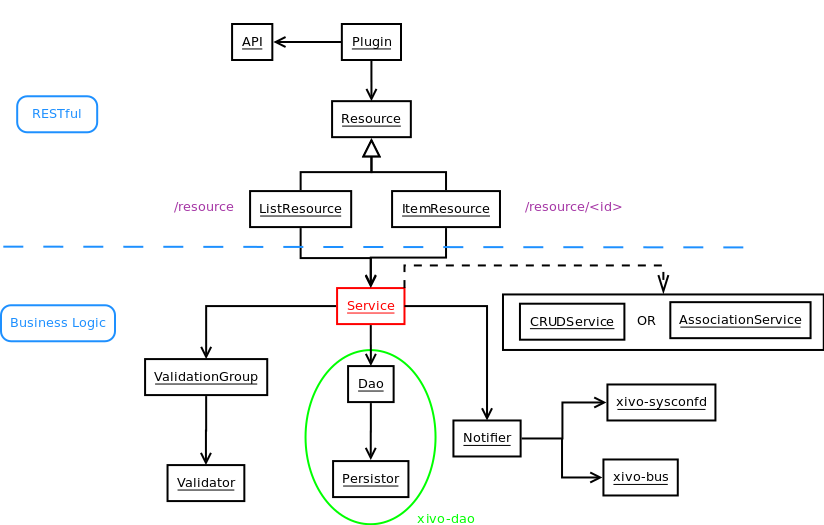Developer's Guide (wazo-confd)
wazo-confd resources are organised through a plugin mechanism. There are 2 main plugin categories:
-
Resource plugins: A plugin that manages a resource (e.g. users, extensions, voicemails, etc). A resource plugin exposes the 4 basic CRUD operations (Create, Read, Update, Delete) in order to operate on a resource in a RESTful manner.
-
Association plugins: A plugin for associating or dissociating 2 resources (e.g a user and a line). An association plugin exposes an HTTP action for associating (either
POSTorPUT) and another for dissociating (DELETE)
The following diagram outlines the most important parts of a plugin:

-
Resource: Class that receives and handles HTTP requests. Resources use flask-restful for handling requests. There are 2 kinds of resources:ListResourcewill handle creating a resource (POST) and searching through a list of available resources (GET). Generally used for root URLsItemResourcehandles fetching a single item (GET), updating (PUT) and deleting (DELETE). Generally used for URLs that have an UUID.
-
Service: Class that handles business logic for a resource, such as what to do in order to get, create, update, or delete a resource.Serviceclasses do not manipulate data directly. Instead, they coordinate what to do via other objects. There are 2 kinds of services:CRUDServicefor basic CRUD operations in Resource plugins.AssociationServicefor association/dissociation operations in Association plugins.
-
Dao: Data Access Object. Knows how to get data and how to manipulate it, such as SQL queries, files, etc. -
Notifier: Sends events after an operation has completed. An event will be sent in a messaging queue for each CRUD operation. Certain resources also need to send events to other daemons in order to reload some configuration data. (i.e. asterisk needs to reload the dialplan when an extension is updated) -
Validator: Makes sure that a resource's data does not contain any errors before doing something with it. AValidatorcan be used for validating input data or business rules.